If you’re a transplant from a colder USDA Zone to a warmer zone, you may have fond memories of rhubarb pie, strawberry-rhubarb jam, rhubarb crisp, or something more exotic, such as Rhubarb-Blueberry Upside Down Cake. But if you now live in USDA Zones 9 or 10, you may be wondering, is it too hot here in the summer to grow rhubarb? Is it too warm in the winter here to grow rhubarb?
Yes you can! But leave your rhubarb growing techniques back in Wisconsin. The trick to growing rhubarb here is: start from seed, not roots; use varieties that are developed for milder climates; and grow them in the shade.
In the podcast above, we talk with Ronni Kern of the West Los Angeles chapter of the California Rare Fruit Growers Association. She has all the details for growing it successfully here in California and in other milder climates.
But before we dive into the pit of endless rhubarb, a bit of business:
“It’s All About the Soil (for a Successful Garden!)”
Did you listen to Episode 353 of the Garden Basics with Farmer Fred podcast? It’s entitled, “It’s All About the Soil (for a successful garden!)”.
We chat with Kevin Marini, a community education specialist with UC Cooperative Extension in Placer and Nevada Counties, about the topic of soil and gardening. We discuss the pros and cons of using native soil versus commercial soil, the importance of improving native soil, the use of bagged mixes and raised beds, and the role of organic matter and fertilizers in gardening. We also touch on the benefits of mulch and the importance of proper watering techniques. Overall, the conversation emphasizes the importance of understanding and improving soil for successful gardening.
You’ll want to listen to it twice, as well as reading the transcript, for all the handy gardening tips and tricks we mention to achieve an outstanding garden.
The podcast (along with a transcript) is available now wherever you get your podcasts. But if you want an accurate, corrected transcript along with the podcast, go to GardenBasics.net . Thank you for listening (and/or reading!)
Farmer Fred’s Ride for the Kids!
I'm fundraising on behalf of the Sacramento Rotary Club’s 2024 Sac Century Challenge bike ride on September 28th to raise money for the Sacramento Children's Home Crisis Nursery and I could use your support. Here’s the link.
On that date, I’ll be riding my bike, a Surly Midnight Special (NOT an e-bike) 100 miles along the Sacramento River to help out the Sacramento Children’s Home Crisis Nursery. I’ve ridden 100 miles in one day plenty of times…when I was younger.
But at 73, I could use some moral support, and the Sacramento Children’s Home Crisis Nursery can use your pledge money. So, how about it? Maybe pledge 10 cents a mile (that’s $10) along with a hearty, “You go, Fred!” Or a more generous one dollar a mile ($100), to give me the mental endurance for the entire ride, to dodge the pothole-filled levee roads and pedal harder in the ferocious headwinds that makes this ride a real challenge!
The Sacramento Children's Home Crisis Nursery is the only program of its kind in Sacramento County and directly prevents child abuse and neglect by supporting families with small children at times of crisis. The nursery allows parents to bring their children ages newborn to five for emergency hourly or overnight care during difficult times, with the goal of keeping families together and reducing the number of children entering foster care. To care for our community's most vulnerable children, we rely on support from community members like you. By donating, you empower us to provide a safe haven for children throughout the Sacramento area, offering respite to parents during times of crisis, and building a strong support system for the future. Your support helps provide a safe place to stay local kids in need. Again, here’s the link to make a donation to the Sacramento Children’s Home Crisis Nursery. Or do it because this newsletter is still free (for now).
Thank you for your support, and say "Hi!" if you see me pedaling like crazy out there along the Sacramento River on Saturday, September 28th!
Can You Grow Rhubarb? Yes!
Here’s the transcript of the podcast (above) chat with Ronni Kern of the West L.A. California Rare Fruit Growers. There are lots and lots of hot links in the transcript to get you to more information about rhubarb and more!
TRANSCRIPT - How To Grow Rhubarb in USDA Zones 9 and 10.
Farmer Fred:
As you are probably very aware, I've been answering garden questions here in Northern California for, well over 40 years, actually. And nobody ever asked me about rhubarb until I visited the eye doctor a few months ago. And besides her questions, which are usually, “Which is clearer, the first one or the second one?” “One or two?” Her other question was, “Can you grow rhubarb here?”
And nobody in all those years has ever asked me about growing rhubarb before. And I mentioned that to her and I said, well, I'll look into it and see what it is. Now, this was back about five months ago. And since then, what an adventure it has been about the history of rhubarb, the history of rhubarb in California, and how to grow it, and all the varieties. And the short answer to my eye doctor's question is, “yes,” with a few reservations. But to even add more to this story, at a recent gathering of the Master Gardeners of Sacramento County, of which I'm one, I came across a Master Gardener who is growing it here in Sacramento, and she sent me a picture of it. And it is gorgeous. It is growing in full sun, which to find out, can be chancy. But it's doing great. It's a variety called “Success” that she found in Australia, in a seed catalog, French Harvest. We'll get into that, too, because this little voyage with rhubarb is going to take us around the world.
Farmer Fred:
It's an amazing journey, so stick around and you'll find out a lot. We are talking with Ronni Kern. Ronni Kern is with the California Rare Fruit Growers Association, and she is down in West Los Angeles for that chapter. And I'm very familiar with the California Rare Fruit Growers here in the Sacramento area. And one thing I know about them, they love to experiment. They love to try new things. That's the whole idea of being a gardener. And the California Rare Fruit Growers Association is full of very curious gardeners. And Ronni is one of those. Ronni Kern also had the same issue I had with finding rhe answer to the question, can you grow rhubarb in California?
Farmer Fred:
And for years, it was like, no, you can't. It gets too hot here. It doesn't get cold enough in the wintertime. Well, California has a lot of climates. And in fact, in her research about growing rhubarb in California, she discovered that actually it was a thriving crop at one time here. Actually, the rhubarb seeds that were developed here, that grew here, came from a very famous seedsman, and you know him well, Luther Burbank, who farmed in Santa Rosa, which, as you may know, gets rather hot as well, over 100 degrees in the summertime. And he was very effusive about the varieties of rhubarb that he was growing. When I start mentioning this about rhubarb to people, if they're from the Midwest, oh, their eyes light up because they remember, oh, yeah, yeah, yeah. I used to love rhubarb pie, fresh rhubarb, jellies and jams.
Farmer Fred:
And they're usually from the Midwest or back east, as is Ronni Kern. Ronnie, you were born and raised in Rhode Island?
Ronni Kern:
Well, actually, I was born in Brooklyn, but I was raised in Rhode Island.
Farmer Fred:
It sounds like your parents, though, would have no business being in New York City, considering how much they loved fresh picked fruit.
Ronni Kern:
Well, my mother loved fruit. My dad was the one from Brooklyn. My dad was not much of an eater until lwhen I was in my 20s, I had a huge organic garden in Vermont and suddenly discovered, oh, “vegetables have taste”. Because when he was growing up, his mother didn’t cook. And my mother cooked frozen vegetables. So he basically was not an eater. My mother was. So it was my mother who was the fruit person. My dad, not so much. Steak, a couple of vegetables. That was it. And I went to college without knowing what a cauliflower was. I mean, to give you some idea of New England upbringing in the 50s. But no, I mean, fruit growing, fruit was a huge part of my childhood because of my mother and because of New England and where I lived. A lot of fruit grew there back then. And I guess it still does. I'm not there now, I've been in California for over 50 years.
Farmer Fred:
Well, rhubarb has sort of the same kind of legal history as tomatoes, in that it took a court in New York to decide that rhubarb should be considered a fruit, because it is primarily used in desserts.
Ronni Kern:
Right. Well, you know, the actual name they used to call it in England was “pie plant” because it was the first thing to come up in the spring when there was snow was on the ground. So people could make pies out of it. And yeah, they consider it definitely a fruit. Though one of my main propagator friends in the West LA chapter, Charles Portney, actually doesn't use it as a fruit because he is pre-diabetic. So he roasts it and cooks it with onion and garlic and olive oil. And he loves it that way. So you can consider it a vegetable. It isn't a vegetable. Burbank considered it a vegetable, but most of us consider it a fruit. And the California Rare Fruit Growers, all right, we're growing it as a fruit. Others grow it as a vegetable.
Farmer Fred:
It has quite the history here in the United States. Allegedly, Ben Franklin brought it over from France. The history of rhubarb goes back to ancient China, where they found it in the mountains of China. So it has a very good cold tolerance. I think here in the United States, it can grow down into USDA Zone 2, which would be probably where my relatives were farming back in North Dakota. But the problem with growing rhubarb, though, has to do with summertime heat, which can really can knock it back for certain varieties. And tell us about your adventure and how you came upon Luther Burbank and all these other rhubarb varieties.
Ronni Kern:
Well, you know, when I came to California, I wanted to grow rhubarb. I mean, that's what I grew up eating. And so I go to the nursery, but all they sell is Victoria. Victoria, some people can grow, but does not really do well in Southern California. It grows as an annual. You put it in the ground, you get a crop, and it dies. And I was frustrated because it never got really big. It never got really sweet. And rhubarb, actually, if it's good, it's sweet. But I gave up on it.
Ronni Kern:
Basically, I said, all right, this is not working. I grew other things. And then four or five years ago, five years ago, I got cancer. And after that, I said, I've got to really figure out rhubarb. You know, time is limited here. So I started researching, and that's when I came upon Burbank and his book, “Luther Burbank, his Methods and Discoveries” has a big chapter on rhubarb. And he said it can be grown, his could be grown in arid, warm, arid climates. I thought, oh, I need some of that stuff. And I thought, okay, no big deal. He was in Santa Rosa. I'll get some of his roots.
Ronni Kern:
Unfortunately, the more I researched, the more I discovered, the roots had disappeared. Somebody bought the patent when he died, and then they got moved on and moved on. But the land was more valuable for housing development or industrial development. And ultimately, his roots were all plowed under, which broke my heart, broke the heart of David Karp, who was a great writer on fruit, well-known around the country. I knew that there were people who must have still had the roots. I bought rhubarb at the farmer's market here from a woman from Valley Center (near San Diego), which is where the last commercial fields were. I have friends who live in Valley Center, but I couldn't find any. And nobody knew about any of that. They had other varieties, cherry and this and that, but nobody knew if they were actually Burbanks. And so that's when I went back to his book and discovered he'd gone to New Zealand to get the roots. And I couldn't get roots then. It was during COVID. I found this wonderful company, French Harvest in Australia.
Ronni Kern:
It's a family that's been growing rhubarb for four generations. Colin Clayton (and his wife, Tina) is the last generation. He wrote a book on rhubarb, which I have in front of me. I started ordering seeds from them. And I passed them out to my members who were interested in propagating. Mostly Charles and I produced most of the plants that have now been spread across Southern California. And people are just going crazy for the stuff because it does grow year round. It does grow in our heat. I do grow it in shade. I have it on my north side of my house where it's happier. But people are growing it almost anywhere. And it's doing really, really well. And we're now in year four and it keeps coming. It's perpetual. It doesn't ever really die back entirely. It slows down. This time of year, it's already starting to curl up. Probably September, October, it'll be looking pretty peaked. And then November when the rains come, hopefully it'll start coming back again. In fact, my big problem is figuring out how to divide roots here because you normally divide divide roots when they're dormant in the winter on the East Coast or Midwest or wherever. And we don't really have that season. I'm a stubborn person. I've been researching my whole life. I was a writer my whole life. A lot of my work was historical, and I just got into the habit of doing a lot of research. And so finding Burbank's book on archive.org or the old news articles that would announce his latest discovery. I mean, he grew strawberry-flavored rhubarb. He grew raspberry. He was a lunatic, and I don't know how much of it was just hype and marketing and how much of it was real.
Ronni Kern:
I don't want to diss Luther Burbank, obviously, but other people were growing it.
Farmer Fred:
I can do that. I can diss him for you if you would like. You made a reference to an old newspaper clipping, and you had it posted in one of the West LA CRFG chapter newsletters, which is online. And it was from the Los Angeles Herald newspaper of 1904. Thank you. And it says, “concerning an improvement on the Australian crimson winter rhubarb, so highly prized by all who have used it, Luther Burbank of Santa Rosa answers an inquiry from the California fruit growers as follows. He said, my last new rhubarb is a variety which produces luscious, juicy stalks perpetually throughout the year, and which do not have the rank strong acid taste, or as some express it, ground flavor, which we naturally associate with the older rhubarb. In place of this is a mild but pronounced fruity flavor, very much resembling strawberries or raspberries, so much so that when this rhubarb is once tasted, no one ever cares to taste the old kind.” Now there's a salesman.
Ronni Kern:
Right. The wonderful thing about this is something called the California Digital Newspaper, whatever it's called, collection at UC Riverside. So you can find all these old California newspapers in there, including something called the Pacific Rural Press, which goes back to 1905(?), where they're talking about his winter, crimson winter rhubarb. And it's coming into great prominence in California. And they were growing hundreds of thousands of acres of rhubarb at a certain time in California. They were shipping it all over the country because it was growing so well here. That's what is so heart-threatening. Now there's almost none, almost none being grown, just backyard gardeners and a couple of commercial, small, small-scale commercial gardeners.
Farmer Fred:
You mentioned David Karp, and he pointed out, I think this was about 10 years ago, so the number may have grown since then. He pointed out back then that there's only four commercial acres left in California of rhubarb, whereas back in the 1920s and 30s, it was over 1,000 acres.
Ronni Kern:
Right. And, you know, I just gave some roots of my Tina's Noble to Dominic Shainer, who's part of Shainer Farms down in Valley Center, the original place where the roots went. And he works with Gray Martin a lot on growing interesting things. And I'm hoping maybe they're commercial growers. I'm hoping maybe they'll get... Them growing again commercially but even at the farmer's market there are maybe two people that sell them and one sells the green stuff which never gets soft and you feel like you're eating celery when you're eating it in a dessert and then this other woman from the valley center was actually growing the really good red stuff but i haven't seen her in years so i don't think there are very many commercial growers. What's one of the things that california fruit growers do we kind of pick up the slack and the same thing with rhubarb. we're going to get rhubarb growing. I must have, I don't know, 25 people growing it now around mostly Southern California.
Farmer Fred:
Do you have any growing it in the Central Valley of California?
Ronni Kern:
I personally don't know. Even though it can handle heat, I would say if you were going to grow it in where you are, I would put it in shade. I would put it either under shade cloth. I actually threw a shade cloth over one of my plants, which is not in shade and was looking kind of, eh. Some of the people that are growing it here said, it's not looking good. I said, put a shade cloth both on it. And it helps. I mean, it makes a huge difference. It seems to be surviving and it's grown well. And some of these, Especially the variety “Success”, the woman that you talked about growing. Success is one that I have. It's one of my favorites because it is the sweetest of the ones I grow. And that comes from Sydney, which is actually much more a climate like we have down here in Southern California.
Farmer Fred:
Sydney, Australia.
Ronni Kern:
Yeah, Sydney, Australia. Whereas the Claytons live in Melbourne, which is further south, which means it gets colder. It definitely gets colder there. I think Colin brought in seeds from Greenland, for Pete's sakes, Who found it in Greenland. I don't need that. I don't have a Greenland climate, but I do have a Sydney climate.
Farmer Fred:
For the sake of those who don't know where Valley Center, California is, where is Valley Center, California?
Ronni Kern:
That's outside San Diego. That's North San Diego County. It's a prime growing area. Most of the avocados come from there. Citrus come from there. It's a wonderful, wonderful growing area. It's just a really good agricultural area.
Farmer Fred:
That's a rather Impolite name then, for an area that is close to the Garden on Eden, calling it Valley Center.
Ronni Kern:
I don't know Where the name came from. It must have been derived from something else. And that's where the last sighting down here of the Burbank roots were.
Farmer Fred:
Well, let's go back to those Burbank roots, because you've been doing updates just about every year on the California Rare Fruit Growers website newsletter for West LA.
Farmer Fred:
You always have something to add every year. And we were talking beforehand that you just discovered that if you go to Santa Rosa, to the Luther Burbank Farm and Gardens, and it's in downtown Santa Rosa, they're back to selling the original roots.
Ronni Kern:
Well, they may be. That's what I was told. And their website seems to indicate that they have located them. Whether you can get them today, I don't know. And I've been tempted to call them and say, are you still selling them? But I haven't done that. But yes, two different chapter chairs have obtained them from the Burbank.
Farmer Fred:
Do we know what varieties are available?
Ronni Kern:
They just call it Burbank Perpetual. That's the name. It's a single variety. Even though he ultimately developed 36 varieties, these are all called just Burbank Perpetual. So I assume that they... Basically have found one variety or they're not distinguishing among them after all this time i sometimes get sounded on the growing fruit forum for saying oh i'm growing glasgow perpetual or i'm growing this one i say well you're not really, because glasgow's been dead 100 years so lord knows what's happened to those seeds over time and it's true. and actually colin when he sent me the seeds the first time he said, “grow them up and if you decide to grow seeds name them whatever you want. these are going to be your california seeds and the ones that do best for you, name them what you want to call them, because they'll be specific to your area.”
Farmer Fred:
Well, that brings up a very good question about what do these seeds develop as? If you buy the Success seed of rhubarb, is it going to come up as Success? Or because it is a hybrid, is it going to be some combination of a lot of different ones?
Ronni Kern:
They are seedlings. They are seedlings, so they are not going to be 100% true. But I think Colin actually has some statistics in his book. I actually glanced at it this morning … But he said basically 50% true, 10% will be even better than they should have been, 10% will be worse than they should have been, and the rest is somewhere in between. So his suggestion is you grow a lot of them and that's why he sends you 100 seeds in a packet for like 15 bucks. He keeps telling me to pull out my Success because it keeps trying to send up seed pods. And you don't want to send up seed pods because then you lose the energy to the roots and then you don't get the rhubarb. But it makes the best rhubarb. So I just cut the seeds off, I don't worry about it, and then have the rhubarb. But I actually have a Tina's Noble that has now formed three different heads. And I'm actually going to separate those out at one point and let one of them go to seed because it is an exceptional plant. And some of the other Tina's I've had have been, they're all been good, but some have not been quite as vigorous as this one. So that's worth perpetuating. I was expecting us just to be sending out, planting out roots and selling roots. But if I can get one of these to go to seed, it seems like pretty easy. Then yeah, we would try that. Back at the Venice Learning Center at the Venice High School, they have a seed bank and they were really big on saving seeds that do well for them there. And they do have some rhubarb seeds of just a sort of generic variety. And I looked at them, then I was big as mine, so I don't care.
Farmer Fred:
But you really do want to grow the colored variety, like the red leaf rhubarb.
Ronni Kern:
The red ones, yeah. Yeah. Well, not the red leaf, the red stalk.
Farmer Fred:
Red petiole, yeah.
Ronni Kern:
There is a red leaf one called Ace of Hearts, but that's really just an ornamental one. You don't need it. It's just a pretty guy.
Farmer Fred:
Yeah, you're right. I should say red stalked.
Ronni Kern:
Red stalk. And yeah, The Glasgow Perpetual, for example, is a green stalked one. It's an excellent, excellent rhubarb. I just happen to like the red ones, when you cook them up, they stay red and you don't have this sort of muddy looking, whatever, compote. You have a nice red compote. You don't have to put cherries or strawberries or raspberries in it. It just is red. I like that. And also, as I said, Success is sweet. The Success is a sweet one, sweeter than any of them. I haven't tasted Crimson Sunrise yet. That's my newest one. But Tinas is a delicious one, but it's not really sweet. You have to add sugar to it. Whereas Success, not so much. You know, it's pretty amazing.
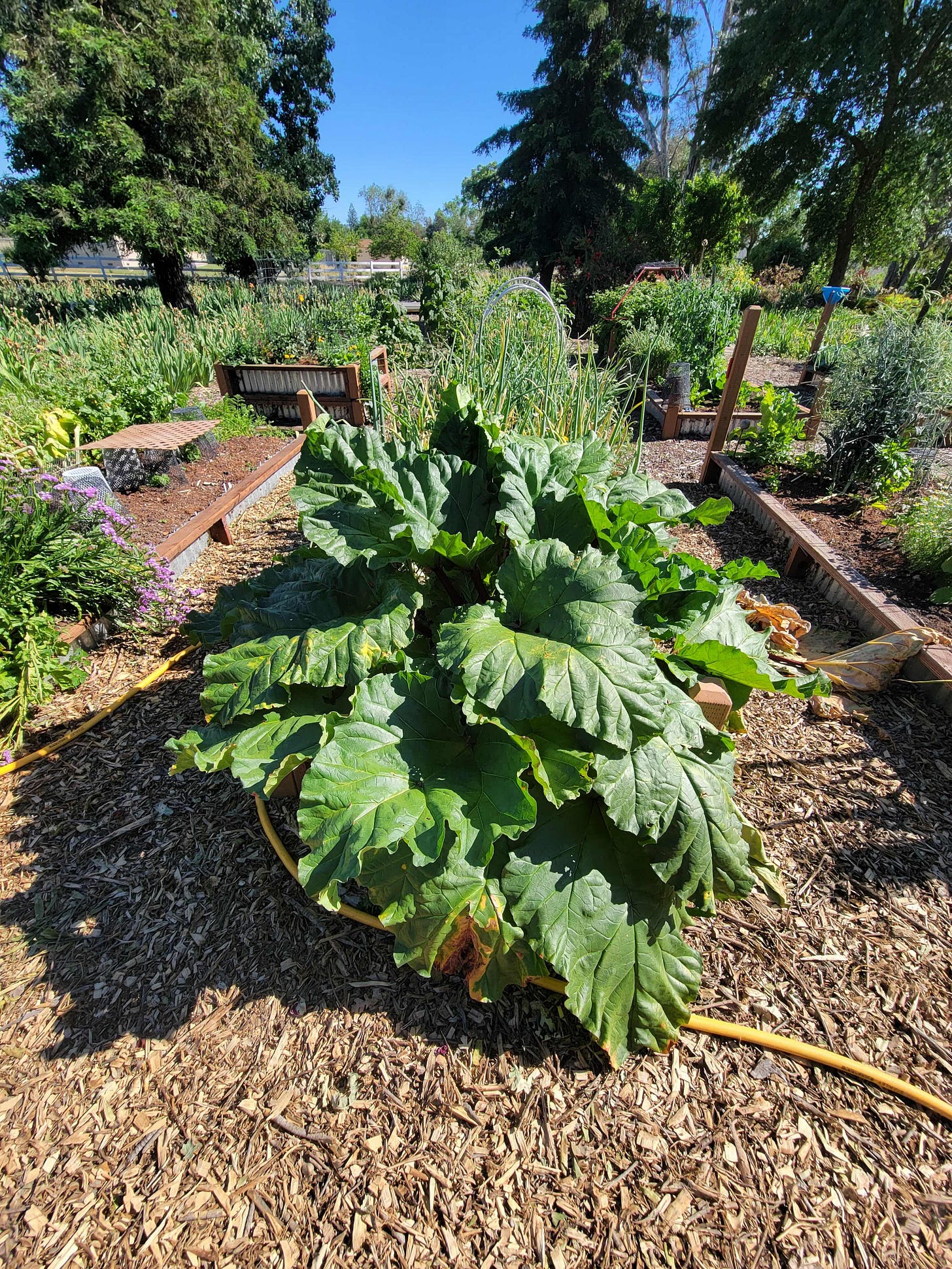
Farmer Fred:
I had mentioned that I came across a master gardener here in Sacramento County, Ruth Ostroff, who is growing Success rhubarb in the Sacramento area. The plant is in full sun. She sent me a picture of it. It is gorgeous. It is large. And it strikes me that rhubarb is a crop that is sort of like asparagus. You want to put it at the back of the garden.
Ronni Kern:
Yeah, it's big. It can be, well, I keep having members say, can I grow this in a pot? And Colin does sell a couple of varieties. I'm actually trying to get one to come up now called Urban Harvest, which is smaller and can be grown in a pot. But these guys, by and large, are big. Crimson sunrise is huge. It needs wind protection. And yeah, so you want them at the back of your plot. Or in my case, I just have it in its own plot all by itself.
Farmer Fred:
And where it's getting, what, afternoon shade? You said it's on the north side of the house. So it's getting afternoon shade.
Ronni Kern:
It gets mostly permanent shade. Oh, okay. It's permanent shade. This time of year, the middle of the day gets sun. But it does fine. You know, the leaves do crinkle up a little bit. I mean, my Tina's Noble is starting to turn a little brown on the leaves. But yeah, it's doing great.
Farmer Fred:
We should mention who Clayton and Tina are. They're the ones that are running French Harvest, the seed company, down in Australia, and they truly are rhubarb heads. And I just ordered a container rhubarb from them, Ruby Red, and the seeds will be arriving soon. If you can find seeds locally, that would be the way to go, because ordering seeds from Australia, while the seeds are cheap, it's like $10 for 100 seeds, but then there's a $25 shipping charge.
Ronni Kern:
This is why this woman in Orange asked me if we could go in together. I bought four packages. And the shipping was finally less than the seeds were.
Ronni Kern:
And also, the other reason why I like to order a lot is because the U.S. Postal Service uses these automated things to cancel the packages, and Tina sends them in an envelope. I've had a lot of seeds arrived crushed. And Tina, she's great about replacing them, but it's a hassle. You wait months to get them, and then they're crushed. And this time, I had my Tina’s Noble and my Crimson Sunrisers just exploded out of the germination beds. And the Urban Harvest and the Success, which has always done well for me, did nothing. And I suspect that they were crushed. It's not anything on the Claytons. They grow great seeds. It should sometimes the vagaries of getting them in from overseas is if you can get them locally, that would be the best. That's why I'm hoping at some point to start growing seeds. And if your friend, the master gardener who's grown success can get seeds off hers, that would be fantastic. Success goes to seed really easily. So she should be able to do that.
Farmer Fred:
As a matter of fact, I have. We try many different varieties here. I mean, that's what gardeners do, too.
So let's get into the nuts and bolts of planting rhubarb seeds. When do you plant them here in California? How do you care for them?
Ronni Kern:
I basically plant them year round. Since I'm getting mine from Australia, they're coming in. This is their winter. So fall is when they're harvesting and putting them up. So any time after I got mine, I ordered mine in June, tend to order mine usually around June, partially because we have our plant sale in December every here so i like to grow them up so we can sell them sell the plants at our plant sale i tend to be a very conservative person in terms of putting things into the ground i want them to be really good strong plants so i let them and make sure they have a lot of leaves i basically get them into one gallon pots before i put them in the ground but i've tried many many different ways of germinating them. it really depends sometimes. i used to float them in water on a heat mat until they formed a little seedling and then then put them in my standard one-third sand, one-third perlite, one-third peat starting mix. i've tried this last batch i tried some of that. i just started another batch in what i happen to have around which was pumice, perlite, and peat, and then just one thing that Colin says is that in nature rhubarb seeds just fall on the ground and germinate, so he says you don't have to bury them. you can just put them on top of your planting mix and then put maybe a little light something on that. i put some perlite on mostly because there's a guy in Eagle Rock who germinates really hard seeds from Brazil, and that's what he does. It's just a very light coating of perlite, very easy for the plants to come up through, doesn't get them overly wet.
Ronni Kern:
Colin keeps saying, do not get them too wet, do not get them cold. They do not like that. As I said, some of these things with Tina’s Noble that have like 90% germination, Success usually had excellent germination, this time not so much. And the Crimson Sunrise also has excellent germination.
Farmer Fred:
I didn't soak my rhubarb seeds, as some instructions might imply. There are several states that are facing the same issue we are as far as growing rhubarb. Down in Texas, they have a great publication about growing rhubarb, especially around the Austin, Texas area. and they talk about the fact that you're better off just growing it as an annual because it just gets too hot there in the summertime. And they have fungal issues too, which can be a detriment to rhubarb because of their higher humidity levels in Texas. Whereas here in California, for the most part, we don't have humidity issues. Of course, it depends where you live.
Ronni Kern:
Right. So this year, the humidity has been insane, but I do plant them up a little high. Some places, they actually plant the rhubarb on mounds. I think even Colin plants his on mounds, so you can walk between the mounds to harvest. Any plant that you're worried about, root rot, whether it's a tropical tree or perhaps a rhubarb, there's no harm in planting it on a mound that sort of protects you from too much water. Mostly, I just planted it. I had a birch tree die. The house was 100 years old. The birch had been here 100 years. It died.
I had the people who took it down ship it and leave it there. So the rhubarb was planted in birch chips and did very well there.
Farmer Fred:
Yeah, Colin points out that they send a nice little piece of literature with every order of rhubarb seeds, and they mention, “rhubarb seed hates to be wet and cold. Rhubarb seeds should not be treated like other seeds. Use high-grade propagation mix. Water once when first sown, then don't water again until the seed starts to germinate in approximately 10 days. Depending upon the air temperature, if the soil becomes really, really dry, then water very lightly if absolutely necessary.” I took a chance and I took some of those seeds. I had a blank spot in a raised bed that is in full sun. I scattered some seed. I put on maybe an eighth of an inch of vermiculite on top of it. And it all germinated within three days.
Ronni Kern:
Wow. And that's the ruby, the ruby red?
Farmer Fred:
No, that was the Success.
Ronni Kern:
The Success. Yeah, because the Ruby Red, we've had a terrible time. I think the smaller the seed, the more likely it is that it's going to get crushed. These are the Success seeds from your friend or from Australia?
Farmer Fred:
These are the ones from Australia. And I grew a second batch of rhubarb seed, the ones from the Master Gardener and the ones that are also from French Harvest. I grew them as suggested in containers, in seed starting mix, in a protected area, and they never sprouted.
Ronni Kern:
that's interesting. So the ones that you planted outside in the sun, in a raised bed, sprouted. My problem is animals eat everything, including my dog. I tend not to start things in the ground because they just disappear.
Farmer Fred:
I mentioned this publication out of Texas, How to Grow Rhubarb Texas Style, and they talk about it as growing it as a winter annual. And so I would think that planting the seeds for that would be similar to what it would be in Texas throughout most of California. And that would be to start those rhubarb seeds in August or September.
Ronni Kern:
Well, again, if you're going to grow it as an annual, you can. I mean, I started this batch. The ones in the garden, I've got Crimson Sunrise and a Success of new ones. I planted the seeds in June of 2023. and then I think in July, my granddaughter was here and we up-potted them out of the little seed things to bigger pots. And then I must have put them in the ground in September. And they're huge now. They're absolutely huge. I tend not to harvest my first year because I want good roots. I want these things to be around. But I could have harvested them if I wanted them as an annual crop. Actually, in all honesty, you can grow them anytime in California. We're not going to get the the deep winter so it's not going to go dormant and if you're growing them especially if you're starting them inside you're not going to get the killing heat when they're just little tiny seedlings actually that's the problem for me if you started them now and put them out in time for the Santa Ana’s (heavy winds) down here. Do you get santa anna's up there?
Farmer Fred:
No, we have delta breezes.
Ronni Kern:
Yeah my brother lived in Sacramento for decades and you've got of course you've got uc davis. you've got the mothership of growing fruit. you could probably follow the Texas thing and start them in the fall. Because of wanting to be able to sell them in December, I start them usually around June, July. And by December, they're definitely big. One of my friends, Charles, actually starts his earlier and then they get too big by December. They're actually, they've outgrown their pots. I don't like to sell plants that have outgrown their pots.
Farmer Fred:
Talk about how you harvest the leaves because I understand you don't cut it, you yank it.
Ronni Kern:
Yank it. And this is a problem because I'm not a young kitty cat anymore. And it requires a certain amount of arm strength because you pull it and twist it at the same time. And some of these plants, if they're not really well rooted, you will pull up the whole plant. I have done that with Tina’s Noble a couple of times. And that's why I give plants away because I accidentally pull them out. But you technically don't want to cut them. But Colin has said, if you have to, you can. You know, it's not going to kill the plant. Again, the big issue if you cut them is the risk of rot. If you left a stub and it rots, then it can affect the plant. But at least down here, even where you are, it's so dry. We don't really have the same issues with rot that other places have. But the correct way is to pull it and twist it at the same time. Usually, there's one way to twist it, and you learn faster because it's different. Each stalk, whether you want to twist right or left, and that sort of signals the roots to grow some more. If you cut it, it doesn't get that same signal to grow some more stalks. So, theoretically, you want to pull it and twist it. I did it as a kid. I just can't do it so well anymore.
Farmer Fred:
Did you eat the leaves as a child?
Ronni Kern:
No, no. I was not dumb. I always have people say, oh, is that charred? Can I eat the leaves? No. The leaves are poisonous. The leaves of rhubarb is full of oxalic acid, great rust remover if you have a rust, but you do not want to eat it. When I pull the stalks up, I just break the leaves off and drop them right down back in the garden for mulch. Some people say you have to cut down two, three inches from the leaves.
Ronni Kern:
I don't worry about that.
Farmer Fred:
So what you're preparing in the kitchen then is that petiole, the center part of the leaf, the spine of the leaf.
Ronni Kern:
I just shy away from any mention of eating any part of the leaf because people, I don't want anybody to die.
Farmer Fred:
So basically, you rip off the green part and eat the middle.
Ronni Kern:
Right. Absolutely right.
Farmer Fred:
There. Okay.
Ronni Kern:
And according to Colin, if you catch it in time, when the thing is starting to put up a seed pod, it'll actually have this little lumpy looking thing. He says, you can actually eat that too. Oh, okay. But I never find it in time. But by the time I see it, it's already got flowers. It's like, okay, I got to get this out of here before they sap my root strength.
Farmer Fred:
And if you want a recipe for rhubarb, just ask anybody from the Midwest or back East.
Ronni Kern:
Right. Well, I mean, we have a couple on our website, but there's East Coast. It was always strawberry rhubarb pie. I'm sure that's the Midwest too, because those are the two fruits that ripened in spring, and they were both red. And especially if you had green rhubarb, you wanted that nice red strawberry to make it look not quite so disgusting. My husband actually prefers raspberry rhubarb cobbler. As I said, Charles prefers to roast it, eat it as a vegetable. And most of us who are obsessive are from either the East Coast or the Midwest. And there's a couple of guys from Connecticut who drove all the way up here to get plants for me. I think they've now put in a big order with Colin themselves because they just really wanted rhubarb. And Steve's always sending me recipes for everything that he finds, beverages and desserts and main courses.
Farmer Fred:
I saw one for snacks for kids where you take that center stem and you chop it into little pieces and you cover it in sugar and serve those little pieces as candy.
Ronni Kern:
Well, when I was a kid, that's what I did. I’d steal the rhubarb from this neighbor. I was not a good kid. And we'd run to somebody's steps and with a lap holding a napkin full of sugar in our laps, we would just dip the rhubarb stem in the sugar and eat it. And that's that's that was our happiness and inexpensive treat.
Well, the sugar was cheap back then. Not so much now.
Farmer Fred:
And there is a very short harvest season, isn't there?
Ronni Kern:
Well, no, see, that's the thing. There's a short harvest season if you are in Rhode Island, because it's a spring crop. But here, no, I've been harvesting. I can't even remember when I first started harvesting this year. Basically, it starts November, December. I'm still harvesting. In fact, if I hadn't just harvested 200 bananas, I'd be harvesting now. But right now we're trying to eat our way through the bananas. I can't tell what's a rhubarb.
Farmer Fred:
We should point out we're talking in August. You're talking eight, nine months you've been harvesting from the same plant.
Ronni Kern:
And I think, I think that I probably will be able to... I mean, I have some big stems out there. I'll probably be able to harvest right into September. And then I'll probably stop September, October. November is when it starts to cool down and they'll start to... That's probably when I'll start dividing them. I think I got to talk to Colin about when I should do that. And yeah, so it's basically a nine-month... I mean, I wouldn't call it entirely perpetual. Though I suspect if I had a lot of different varieties under shade, I probably could stretch it out. Because Success and Tina's Noble tend to be strong at different times of year. Crimson Harvest, Sunrise, I don't quite know because it's new to me, but it's looking huge and very healthy. I'm willing to see what it's going to do for me.
Farmer Fred:
Is all that work worth it?
Ronni Kern:
It's not a lot of work. I mean, the starting of the seeds is a hassle just because I'm not a seed person. I'm not very good with little tiny things. I like to be able to dig in big holes. Once you put them in the ground, it's sort of easy to take care of. They don't have bugs. We don't have the diseases. I guess people talk about the fungus. We don't have that. You give them a big, good snack at the beginning of every growing season, some people use manure, I don't use animal products, but I use fish bones, maybe. Give them a good snack at the beginning of the growing season. That's it. And then you harvest them and you eat them. Or you cook them and eat them, depending on what you want to do.
Farmer Fred:
So one warning that I've seen in several places is don't overwater them.
Ronni Kern:
Yeah, well, you don't want them to rot. You want to water them enough that they don't look wilty. But I just have them on the same drip system as the rest of my yard. I water them the same as I water my avocado trees and my lemon trees and my banana trees. Well, my bananas are also on gray water, but everything just basically gets the same amount of water because in California, at least, I don't know where you are, but down here, we can only water twice a week. It's actually, of all the plants I grow, it's probably the least high maintenance because once you get the seeds up and in the ground, they do it themselves.
You just have to keep an eye out for the seeds. You don't want them to go to seed. That's it.
Farmer Fred:
So the answer to the question, can you grow rhubarb in California? Ronni Kern would give you a resounding yes, you can.
Ronni Kern:
Absolutely. Absolutely. Do not hesitate. Just give them some shade. That's the only thing I would say.
Farmer Fred:
Ronni Kern is with the West Los Angeles California Rare Fruit Growers Association. We'll have links in the notes today about where you can read her literature. And it's very enlightening. So if you have a relative from back east and or you're from back east and you fondly want some rhubarb, well, get to it and start growing it. Ronni Kern, thank you so much for all this great information.
Ronni Kern:
Well, thank you, Fred, for finding me. I have no idea how you did it, but you did your research. That's for sure.
Thanks for reading Beyond Basics: The Garden Basics with Farmer Fred Newsletter! Subscribe for free to receive new posts and support my work.
Thank you for also listening to the Garden Basics with Farmer Fred podcast! It’s available wherever you get your podcasts. Please share it with your garden friends.
Fred Hoffman is also a University of California Cooperative Extension Master Gardener in Sacramento County. And he likes to ride his bike(s).

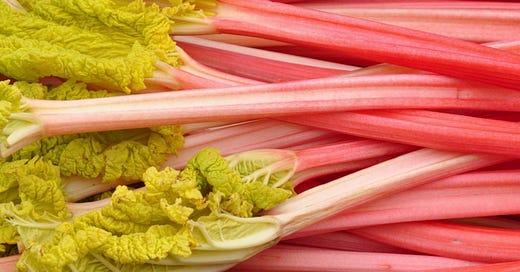



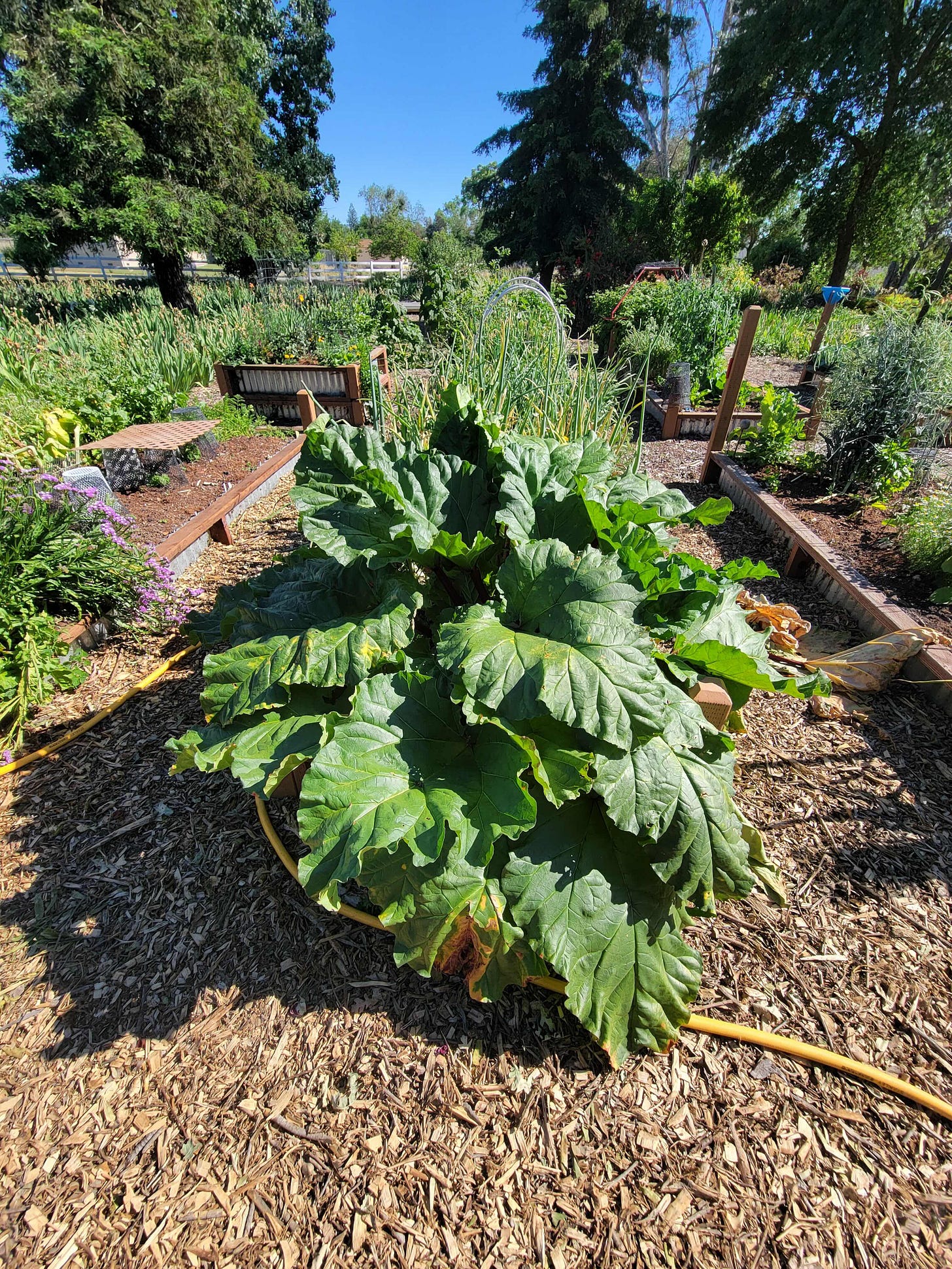
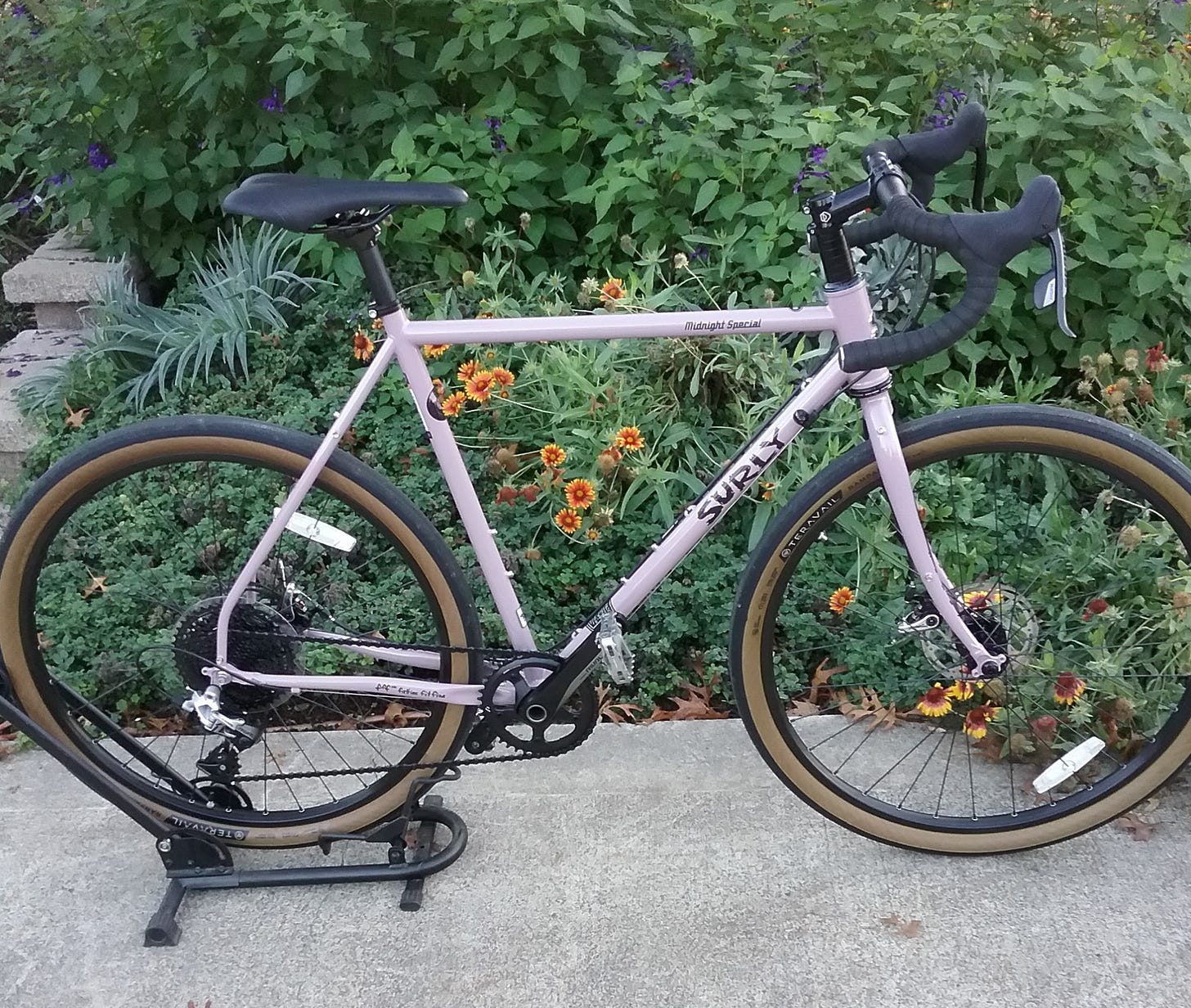
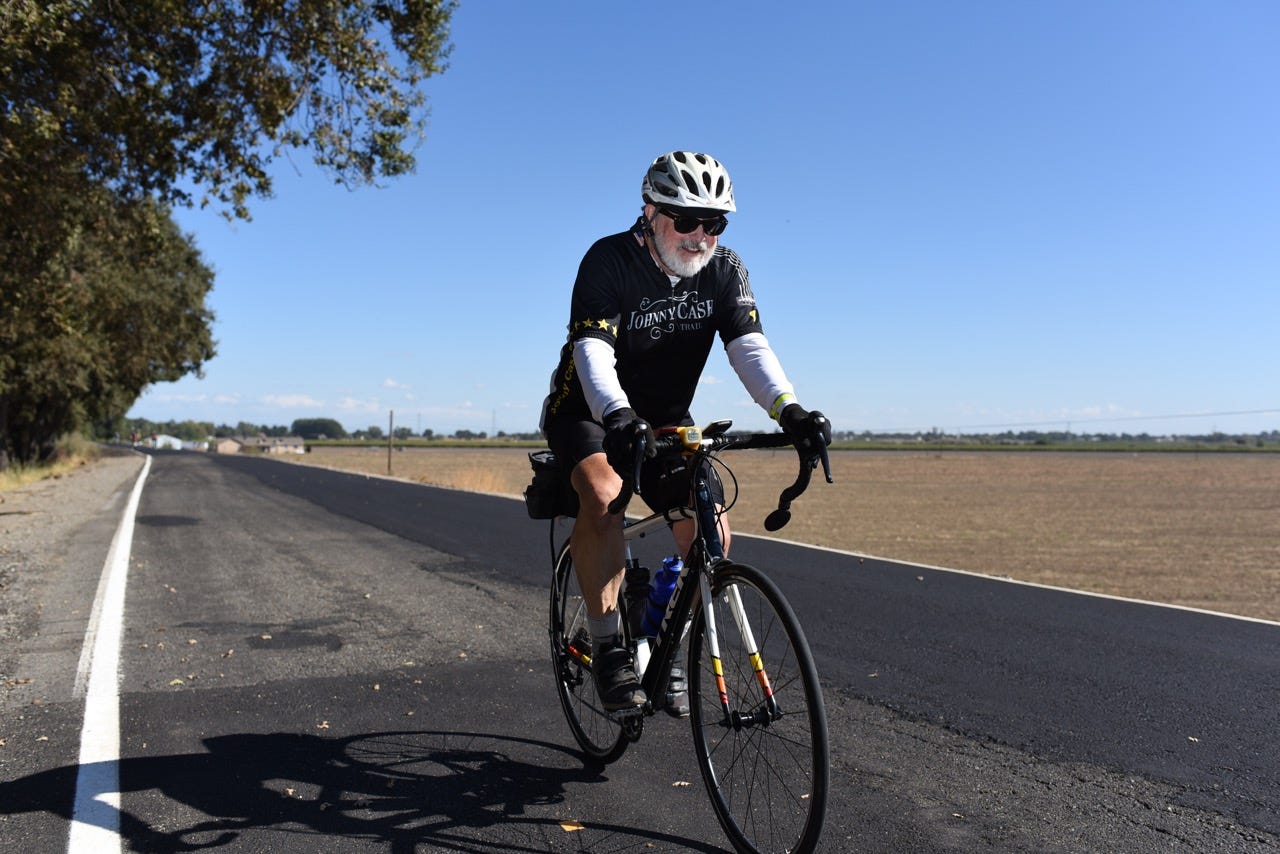
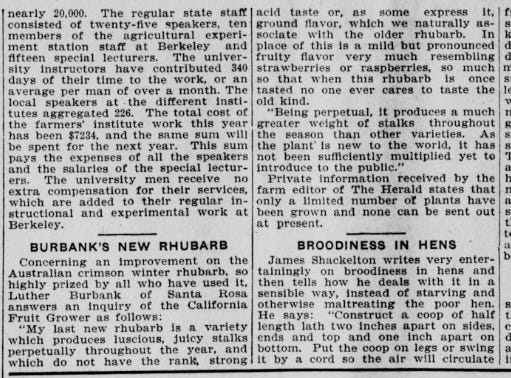

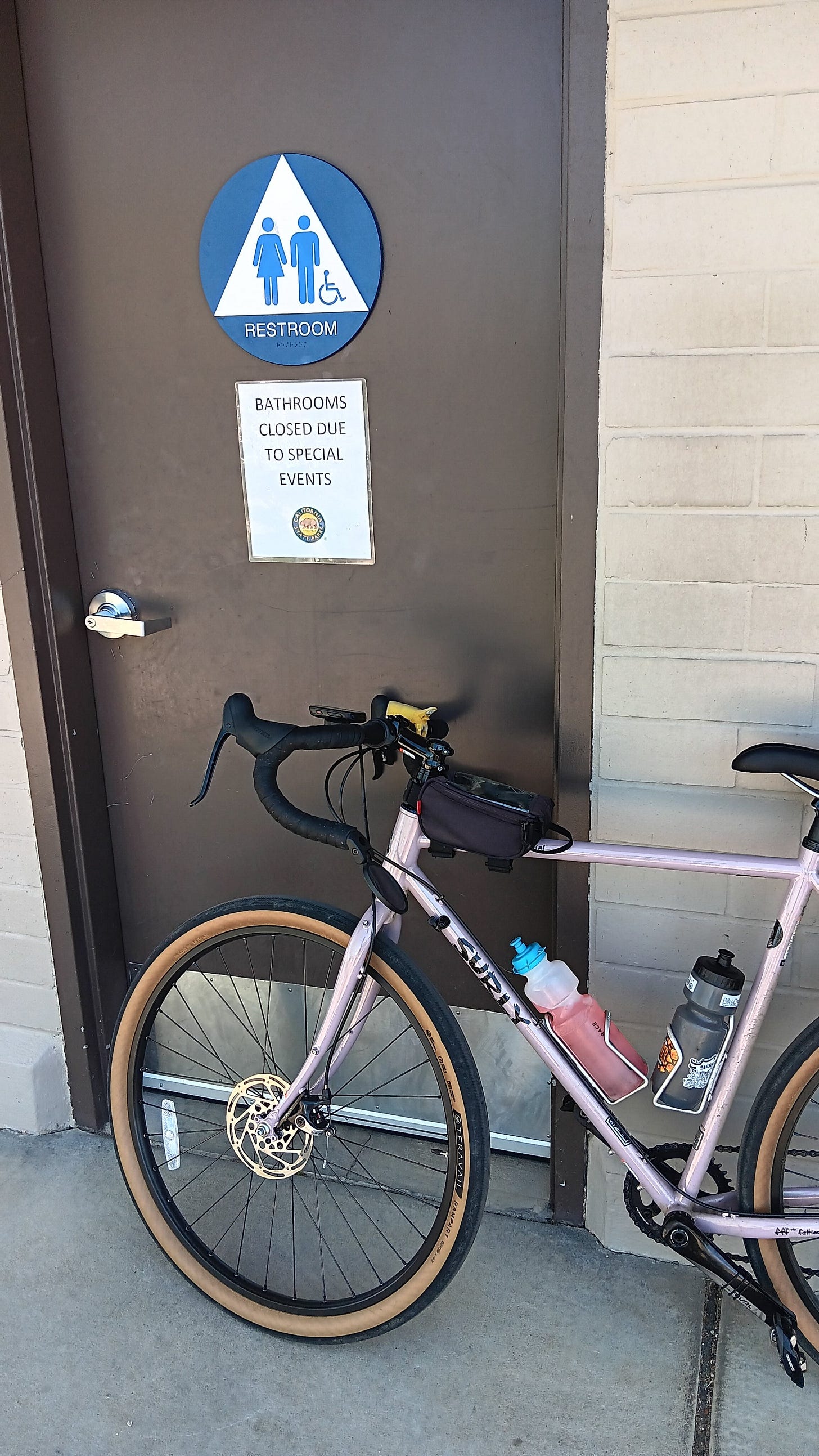


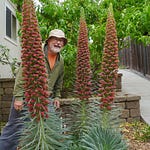

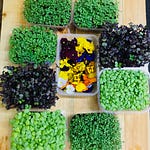
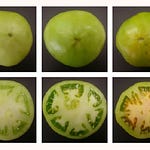

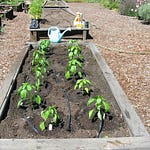
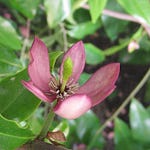
Share this post